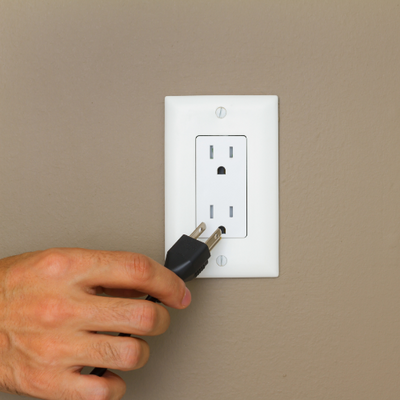- 1-905-452-8193
- Contact Us
- Member Login
- Get Listed Today
- 220,911 members

A "low voltage outlet" is typically referring to an electrical outlet that is providing a lower-than-normal voltage output. Outlets in homes are usually designed to deliver around 120 volts in the United States and about 230 volts in many other parts of the world. When an outlet is experiencing low voltage it means that the voltage measured at the outlet is lower than the standard 120 volts.
Low voltage in an outlet can lead to various issues, as it will affect the performance of the devices connected to it. Some common signs of low voltage include dimming lights, slow or underpowered electronic devices, or even damage to appliances or equipment due to insufficient power.
Discovering a low voltage outlet in your home can be frustrating since it will not only affect the performance of electrical devices but can also lead to potential damage. Fortunately, a lot of the time low voltage outlets can be repaired fairly easily without the need for a professional electrician. Although if you have any reservations about trying to DIY your outlet then it is always good to consult with a Charlotte electrician near you.
Steps To Follow When You Find A Low Voltage Outlet
1. Identify The Low Voltage Outlet
Before attempting any DIY electrical fixes, it's important to confirm that a low voltage outlet is the actual issue. You can use a device called a multimeter to measure the voltage at the outlet. Standard household outlets should register around 120 volts. If the reading is significantly lower, you could be dealing with a low voltage problem.
2. Check Other Outlets
Determine whether the low voltage issue is isolated to one specific outlet or if it's affecting multiple outlets throughout your home. This information will help you pinpoint the source of the problem and make sure that you repair the issue correctly.
3. Inspect Circuit Breakers
Low voltage problems are sometimes caused by tripped circuit breakers. Check your circuit breaker panel and reset any tripped breakers that could be affecting the outlet. If the breaker continues to trip after being reset, it could indicate a more significant electrical issue that requires the attention of a professional residential electrician near you.
4. Examine Wiring Connections
Loose or damaged wires can also contribute to low voltage outlets. Turn off the power to the outlet at your circuit breaker panel and carefully inspect the wiring connections running to the outlet. Tighten any loose screws or replace damaged wires. Ensure proper insulation to prevent electrical hazards.
5. Test the Outlet with a Different Device
Sometimes, the issue may be with the device you're using rather than the outlet itself. Test the outlet with a different device to rule out the possibility of a malfunctioning appliance causing the low voltage reading.
6. Replace the Outlet
If it turns out that the outlet is the problem, it is best to replace it with a new one. Faulty outlets can lead to low voltage issues, and a replacement is a relatively simple DIY task. Make sure that you follow proper safety procedures and turn off the power before replacing the outlet.
7. Inspect the Wiring in the Wall
If multiple outlets in your home are affected, especially if they are in the same area and could be running on the same circuit, there may be an issue with the wiring inside your walls. Inspecting and repairing electrical wiring is best left to a professional, particularly if the wiring is not easily accessible.
8. Consult a Professional
If you've gone through the above steps and still cannot figure out why you are experiencing low voltage, it's time to consult a licensed electrician in your area. Professional residential electricians have the expertise and tools to diagnose and address complex electrical problems safely.
Contact An Electrician About Your Low Voltage Issue
Fixing a low voltage outlet can be a manageable task accomplished through careful inspection and DIY techniques. However, safety should always be your top priority. If you are unsure about any aspect of electrical work or if the issue persists after your efforts, it's best to seek the assistance of a qualified electrician. Regular maintenance and prompt attention to electrical issues can help ensure the safety and reliability of your home's electrical system. If you live in North Carolina and are looking for an electrician in Charlotte don’t hesitate to contact the team here at Livewire Electrical.
